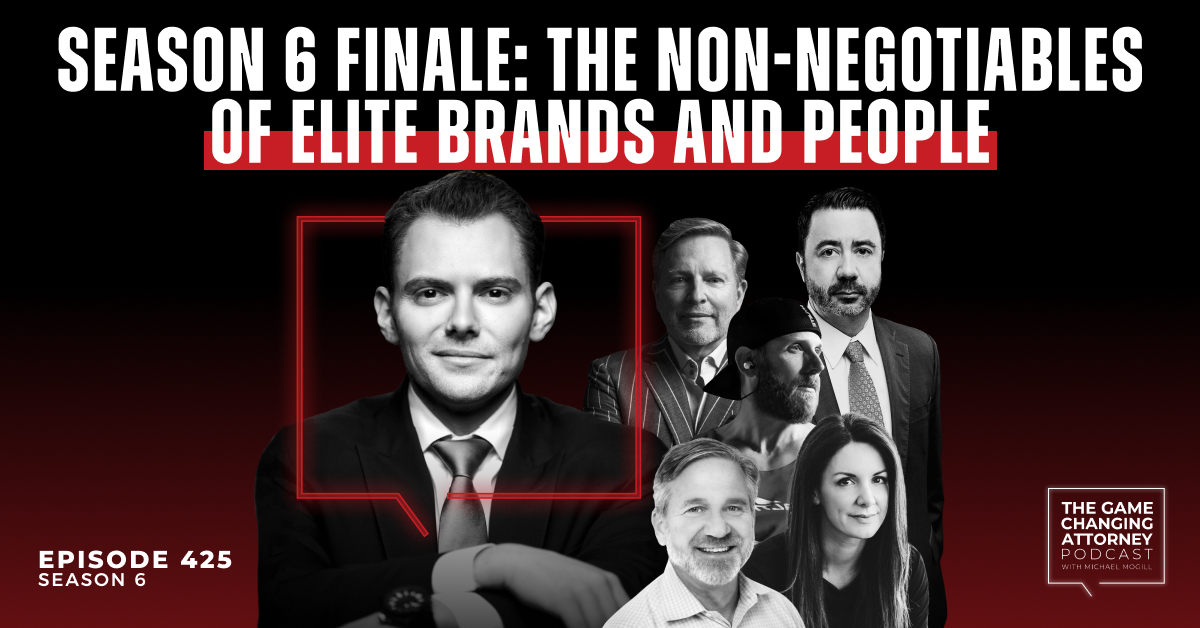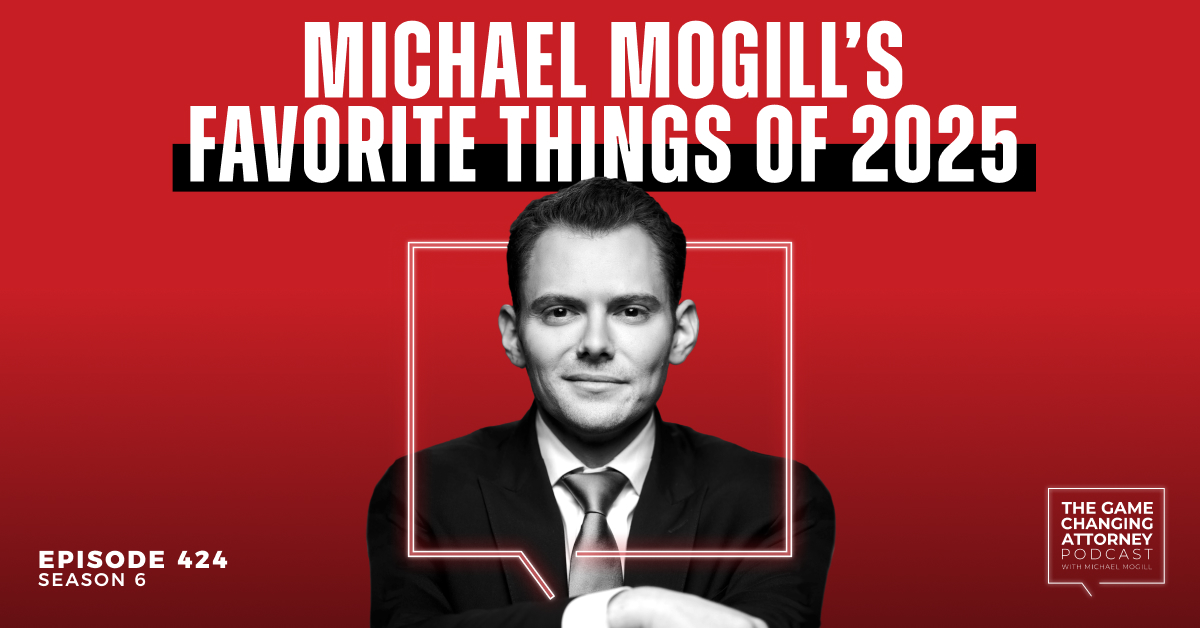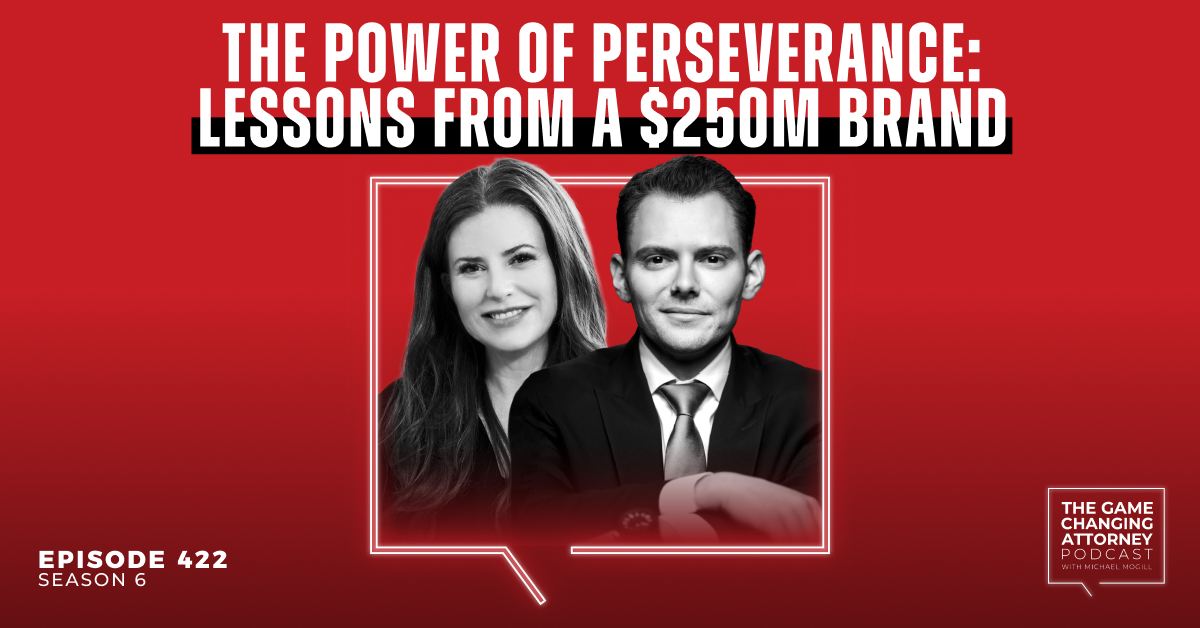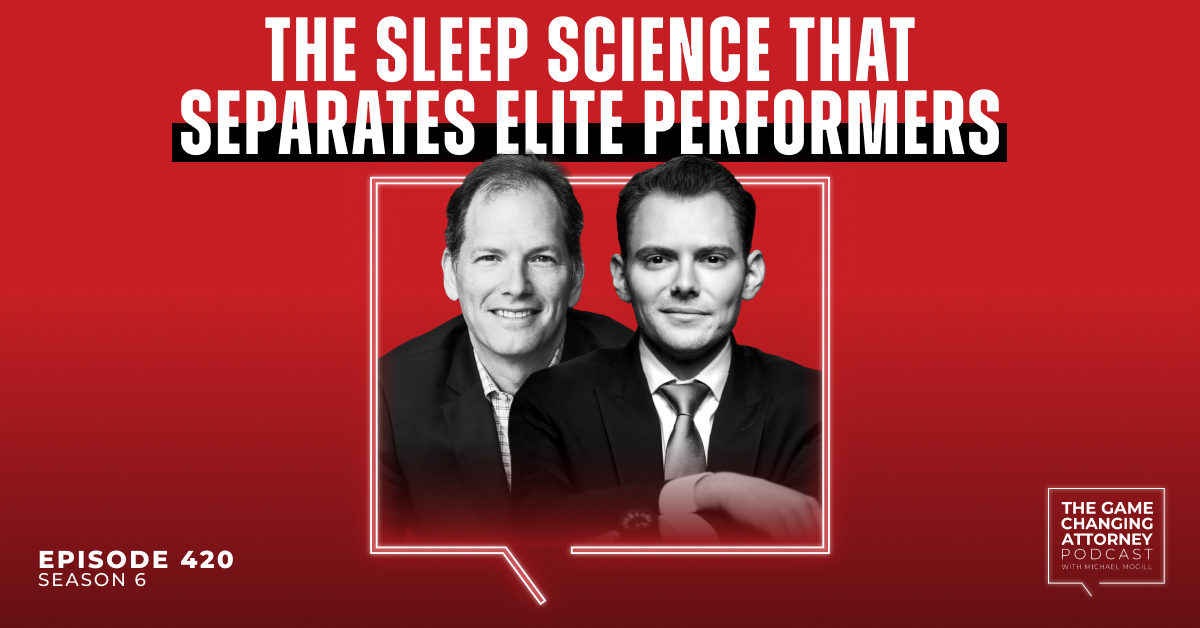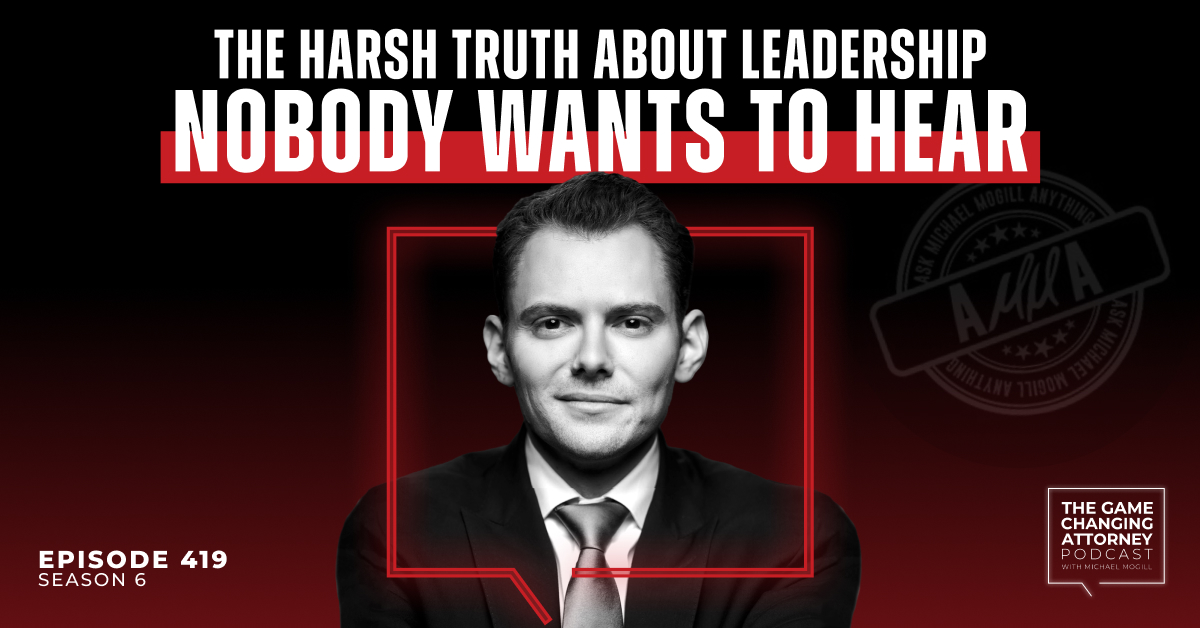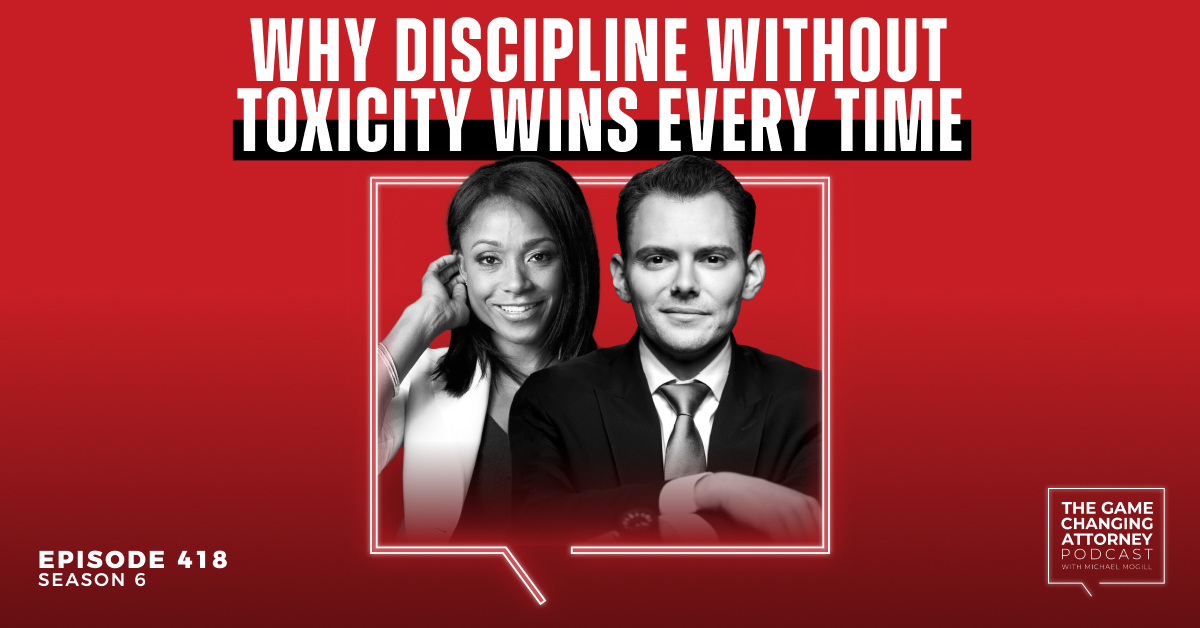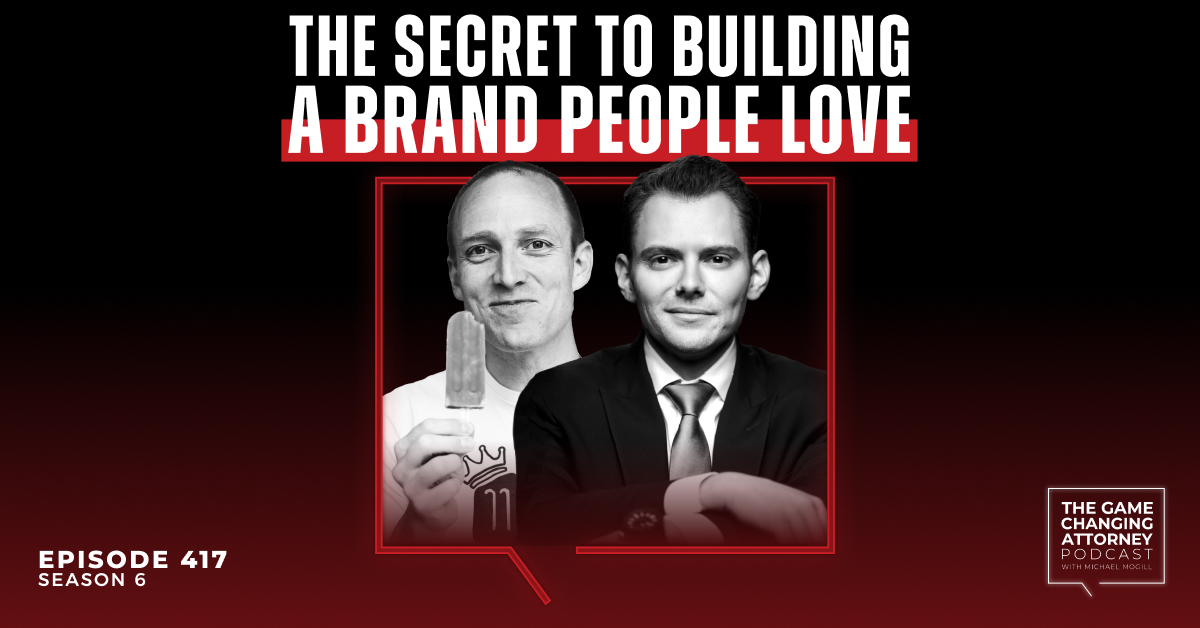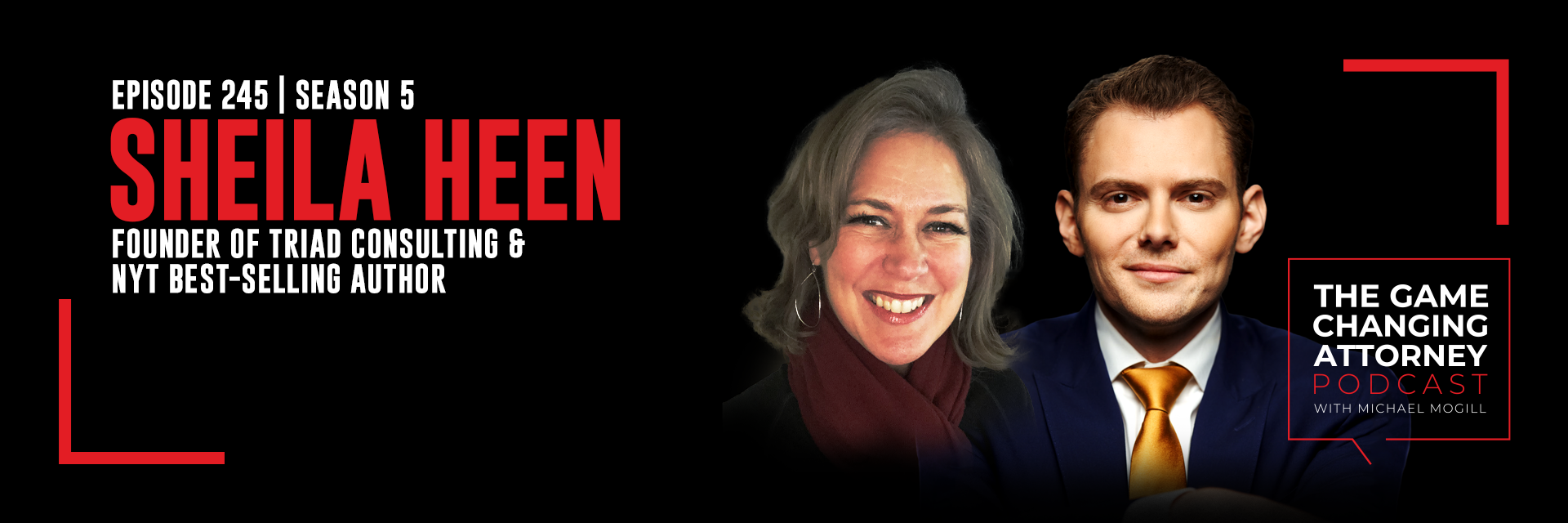
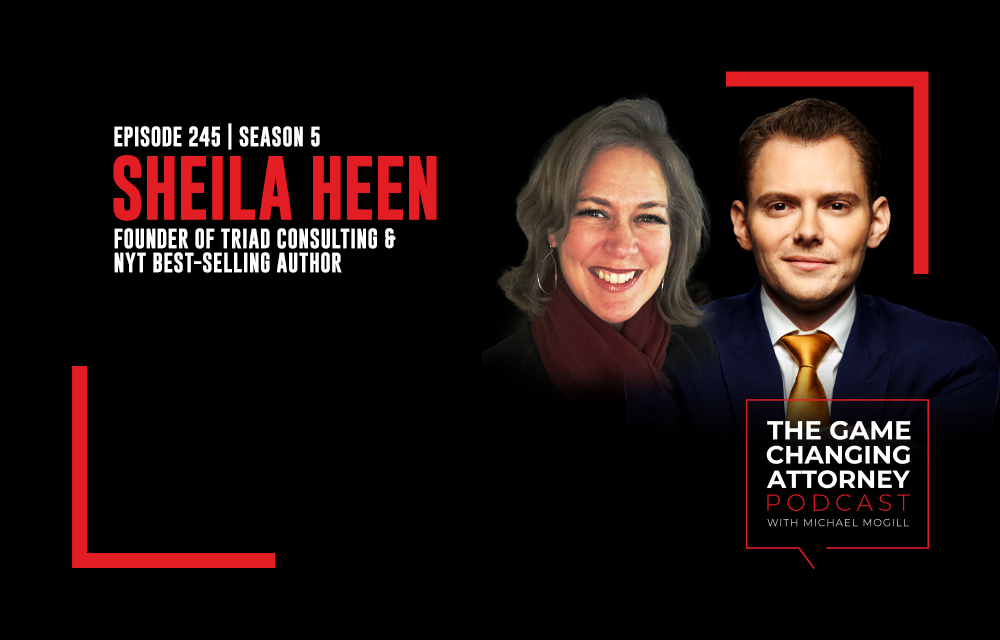
Episode 245 — Sheila Heen — How to Master Difficult Conversations
Nearly every kind of feedback — whether you agree with it or not — can be used to help you grow. Sheila Heen knows this well.
As the founder of Triad Consulting Group, professor of practice at Harvard Law School, and the co-author of Thanks for the Feedback: The Science and Art of Receiving Feedback Well and Difficult Conversations: How to Discuss What Matters Most, Sheila has spent nearly 30 years helping executive teams across the world work through conflict, repair working relationships, and make sound decisions together.
In this episode of The Game Changing Attorney Podcast, Sheila and Michael Mogill discuss:
- The underlying structure and challenge of every difficult conversation
- The different types of feedback leaders can give — and what actually works
- How to raise tough issues and have productive conversations

Listen & Subscribe
Show Notes:
The most powerful skill. “When students come to me and say, ‘I don’t know what I want to do with this law degree, but I’m really interested in the field of negotiation,’ I tell them that there isn’t a specific field but the good news is that everybody in the world needs these skills. There’s a whole realm of negotiation in court-annexed mediation and arbitration, but also every organization in the world needs people who can help others understand problems and find solutions together and to collaborate more effectively.”
Defining difficult conversations. “What doesn’t make a conversation difficult? For me, sometimes it’s that there’s a lot of uncertainty involved and I feel like we don’t have great information but we’re trying to make a judgment call. It could be that there’s a lot of history in the relationship, so this is just the latest example of each of us feeling frustrated or badly treated by the other and we’re bringing all of that to a conversation. Sometimes it’s a lack of clarity and just that I don’t know what I want or what I think. Some of the hardest conversations are the conversations I have with myself about tradeoffs and I feel like I have to make a hard decision like ‘What can I live with?’ and ‘How does that intersect with identity and the story I tell about the person I want to be?’ Some of the hardest conversations are places where your own identity is in conflict.”
Decoding tough talks. “All difficult conversations really have the same underlying structure. If you look at people’s internal voices — the things that we’re wrestling with, thinking about, feeling, trying to decide what to do about in these messy conversations — you can really bucket them into three conversations that we’re having with ourselves and with each other. The first is the What Happened conversation. This is our story about what has happened, what we think is happening now, and what we think should happen. And that story has three parts. One is ‘What is this really about?’ and ‘What am I right about?’ which is the place we feel like we have to cling to but it’s actually a trap, because then I’m not curious about what I might be missing. The second part of that story about what happened is blame: ‘Whose fault is it that we’re having this problem?’ And the third is all about intentions and motivations: ‘Why are they acting this way?’ and ‘Why are they being so stupid or annoying or irresponsible?’ But sitting underneath that story that we have about what happened is what we call the feelings conversation, which is how we each feel treated by the other. We’re each trying to figure out how to manage our own feelings or respond to the other person’s feelings. And finally, the last type of difficult conversation is at the heart of it, the identity conversation, which is the story we tell about who we are or want to be. Often if a conversation feels difficult, it’s because something around identity has gotten hooked and that generates bigger feelings and anxiety than normal, and then that colors the story we’re telling about what happened. So they’re all linked together.”
Embrace identity fluctuations. “We’re really prone to holding our identity as either/or — either I’m a good person or a bad person, either I’m competent or I’m totally incompetent, either I’m thoughtful or careless — because something the situation suggests about you feels upsetting, and we can fall into that trap pretty quickly. Part of grounding yourself is accepting what might be true about you is not what you believe it is: holding your identity as someone who tries to be X and occasionally falls short and allowing that to be normal. It’s very aligned with Carol Dweck’s work on moving from a fixed identity or a fixed mindset to a growth mindset. I used to see a growth mindset or a fixed mindset as either/or. And just like identity not being either/or, I have learned through experience that I’m always fluctuating between the two.”
Choose a different story. “Anytime you’ve got two people having an issue, that probably warrants discussion. In my story, I’m the good person and you’re the problem. So if I start the conversation from my own story, for example, ‘Can we just talk about the fact that you don’t ever clean up the kitchen?’ or ‘Why don’t you sort the files the way they’re supposed to be sorted, so that people can actually find their way around the drive.’ Whatever it would be, you’ll catch on pretty quick that in this little play I’m inviting you to join, I am the hero and you are the villain — or at least the idiot — and that’s not a play you particularly want to be cast in. In your play, of course, those roles are reversed, because you’re the person who pays attention to what’s really important around here and doesn’t get hung up on the kind of anal baloney that I do. Neither one of those places is a great place from which to invite someone else into a good conversation. So start from the third story. Start from the perspective of someone who was a third party, who saw what was legitimate and noticed what was different about each of our stories. Neither one of us is the good person or the bad person. Now I’m treating you as a peer or a partner in just exploring whether there are better options, and that’s a more inviting conversation to have.”
Different types of feedback. “The three different types of feedback are appreciation, coaching, and evaluation. My co-author and I didn’t actually make that up. They come from Roger Fisher. John Richardson, and Alan Sharp in their book Getting It Done. The idea is that we actually need all three kinds of feedback to learn and grow, but they have really different purposes. We need appreciation to say, ‘I see you, I get you, you matter, and I notice how hard you’re working.’ When you’re short on appreciation in a relationship — whether it’s a work relationship or a personal relationship — that shortage means that it gets in the way of my willingness to receive coaching, which is the second kind of feedback. If there’s a shortage of appreciation, it has an impact on engagement and persistence. Coaching is the second kind, and it’s anything designed to make you better, more effective, more efficient, more knowledgeable. It’s really the engine for learning and growth as a human and as a professional. As you get higher in any organization, you have a bigger and bigger impact on everybody, and fewer and fewer people are willing to tell you about it, so as you get more senior, you need better skills to invite candid coaching, because fewer people are willing to take the risk to offer it to you. Coaching bumps into the third type of feedback, which is evaluation which rates or ranks you. It says whether you’re on track or how you’re doing against expectations. Performance reviews and grades certainly are evaluation, but we’re also evaluating one-off situations or tasks, like ‘Are we prepared for this pitch?’ or ‘Is this document ready to go out or not?’ We’re looking at the work and talking about if it meets our standards and expectations. We are evaluating day in and day out. It’s easier to evaluate the product than to feel judged as a person, and our reaction to being judged as a person means that often we don’t hear the evaluation. It can drown out the coaching that’s often embedded in the way someone is suggesting that we might change. We need all three kinds of feedback. We’re just not very disciplined about thinking about what kind of feedback we need right now and how we could get it, or what kind of feedback you’re offering and knowing that’s what they need. Be as clear about what you think you’re offering and why you’re offering it.”
Navigating sensitivity. “One of the interesting things in working on the Feedback book is that we were really trying to figure out what is so hard about receiving direct and indirect feedback for all of us from the people around us in our lives. Partly we found that in response to anybody’s direct or indirect suggestion, we could use some feedback — especially coaching and evaluation — that we have triggered reactions. One of the triggered reactions is what we call an identity trigger, and part of that is how we’re wired. There’s evidence that suggests that in terms of our sensitivity to feedback (how upset we get and how long it takes us to recover), individuals can vary by up to 3,000%. This means you’ve got people who are very, very sensitive talking with people who are probably under-sensitive and it’s just a disaster waiting to happen. The question to lead with is ‘What would be helpful to you?’ For leaders, ‘If I have coaching for you, how and when do you want to receive it?’ is an incredibly fruitful conversation to have.”
Front seat leader, back seat feedback. “It’s so easy when you’re in the front seat with the experience and the resources and the good view of the road and knowing where you’re going when someone pipes up in the back seat to say something that doesn’t make any sense. It’s so easy to dismiss it as just wrong and move on when often it’s the people in the back seat who see something coming that’s going to sideswipe you or are in closer contact with the folks on your staff who are feeling frustrated. Whether we’re driving or we’re leading, we all have blindspots and we actually need other people in order to see ourselves clearly and in order to see the whole picture together so that we can make the best decisions that we can.”
What does being a game changer mean to you? “Don’t study how people do do things. Study how people should do things because the way we do do them has gotten us where we are in some not great ways at the moment. Asking the question, ‘What is the game that we’re in and how do we change it?’ I think this is the central question that we are wrestling with.”
RESOURCES & REFERENCES
Triad Consulting Group
Harvard Law School
Thanks for the Feedback: The Science and Art of Receiving Feedback Well by Douglas Stone and Sheila Heen
Difficult Conversations: How to Discuss What Matters Most by Douglas Stone, Bruce Patton, and Sheila Heen
Occidental College
The Harvard Negotiation Project
Bruce Patton
Mindset: The New Psychology of Success by Carol Dweck
Getting It Done by Roger Fisher. John Richardson, and Alan Sharp
Tesla
The Game Changing Attorney by Michael Mogill
Connect with Michael
- Text directly at 404-531-7691
